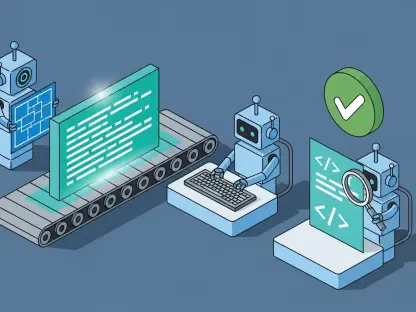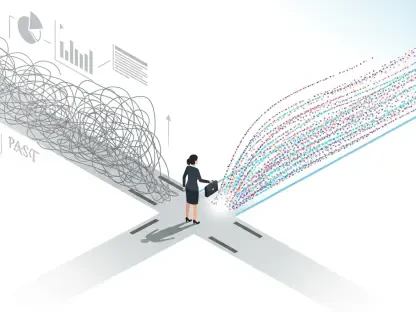What if the very tools designed to streamline daily tasks are silently paving the way for catastrophic cyber breaches? In a world where AI assistants are embedded in nearly every business operation, their ability to browse live websites, recall user context, and integrate with critical apps is both a boon and a hidden danger. Beneath the surface of this productivity revolution lies a chilling reality: these features make AI tools an enticing target for malicious actors. This feature article uncovers the unseen vulnerabilities of AI assistants, exposing how they have become a critical cyber attack surface that could jeopardize entire organizations.
The significance of this issue cannot be overstated. As businesses race to adopt AI for efficiency gains, the cybersecurity risks tied to these tools often slip under the radar. With real-world exploits already documented, the potential for data leaks, malware persistence, and reputational damage is no longer a distant threat but an immediate concern. Boards and IT leaders must confront this double-edged sword, balancing the undeniable benefits of AI with the urgent need to secure these powerful systems against evolving threats.
Unveiling the Unseen Threat in AI Tools
AI assistants, once seen as mere productivity enhancers, are now recognized as potential gateways for cyber attacks. Their seamless integration into workflows—handling emails, accessing cloud storage, and even summarizing web content—has made them indispensable. However, this very connectivity transforms them into a prime vector for exploitation, where a single flaw can expose sensitive data across an entire network.
The scale of the problem is staggering. Research from cybersecurity firms reveals that many AI tools lack the robust defenses needed to counter sophisticated attacks. Features like live web browsing, intended to provide real-time insights, can inadvertently pull in malicious content, turning a helpful assistant into an unwitting accomplice. This hidden risk demands immediate attention from organizations that rely on such technology.
Beyond the technical implications, the stakes involve legal and regulatory repercussions. A breach facilitated by an AI assistant could lead to significant fines, lawsuits, and loss of customer trust. As these tools become more pervasive, understanding and addressing their vulnerabilities is not just an IT concern but a strategic imperative for any forward-thinking enterprise.
The Double-Edged Sword of AI in Cybersecurity
While AI assistants promise unparalleled efficiency, they simultaneously expand the cyber attack surface in unprecedented ways. Their ability to interact with live internet content and connect to internal business systems introduces risks that traditional software rarely posed. This duality challenges organizations to rethink how they deploy and secure such technologies.
Cybersecurity experts have noted a troubling trend: the more integrated an AI tool becomes, the greater the potential impact of a breach. Data exfiltration, where sensitive information is siphoned off without detection, is just one of many threats. Malware persistence, enabled by an assistant’s memory retention, can linger undetected, waiting for the right moment to strike.
The business ramifications extend far beyond technical fixes. A successful attack could trigger costly incident response efforts, regulatory scrutiny, and irreversible damage to a company’s reputation. With boards pushing for rapid AI adoption, the urgency to address these risks has elevated cybersecurity from a back-office concern to a top-tier priority in corporate strategy.
Dissecting Vulnerabilities: How AI Tools Are Weaponized
Delving into the specifics, AI assistants harbor vulnerabilities that attackers can exploit with alarming ease. Research labeled as “HackedGPT” by Tenable highlights a technique called indirect prompt injection, where malicious instructions are embedded in web content accessed by the AI during browsing. This can trigger unauthorized data access without any user awareness, bypassing conventional security measures.
Another critical threat comes from front-end query attacks, where carefully crafted inputs seed harmful directives into the AI’s responses. Such methods can turn the assistant into a conduit for data theft or malware deployment. Additionally, flaws in plugins and connectors—often used to link AI tools with file stores or messaging apps—create backdoors that amplify exposure, as past incidents have demonstrated.
These risks are not mere speculation. Public studies confirm that sensitive data leaks through injection techniques remain a persistent issue, even after some vendors have rolled out patches. The complexity of AI systems means that as new features are added, new vulnerabilities inevitably emerge, keeping organizations on a constant defensive footing.
Expert Insights on the Alarming Realities of AI Exploitation
Cybersecurity professionals are sounding the alarm on the growing dangers posed by AI assistants. According to Tenable’s advisory, while certain vulnerabilities have been mitigated, others remain exploitable, posing ongoing risks. This patchwork of fixes underscores the challenge of securing tools that are continuously evolving with new capabilities and potential failure points.
An industry expert recently described AI assistants as “internet-facing applications with unpredictable behavior,” emphasizing the need for stringent oversight. This perspective aligns with documented cases, such as a critical flaw remediation by a major AI provider earlier this year, which addressed a zero-click attack vector. Such incidents reveal how even minimal user interaction can lead to significant breaches.
The consensus among specialists is clear: AI is not just a productivity tool but a live risk that demands proactive management. As attack vectors like one-click exploits become more sophisticated, the gap between innovation and security widens, leaving organizations vulnerable unless they adopt a vigilant, risk-aware approach to AI deployment.
Actionable Strategies to Secure AI Assistants
Transforming AI assistants from a potential liability into a secure asset requires a structured approach to governance and control. One foundational step is establishing an AI system registry, cataloging every model and assistant across cloud, on-premises, and SaaS environments. This inventory, aligned with frameworks like the NIST AI RMF Playbook, should detail ownership, purpose, capabilities, and data access to eliminate untracked “shadow agents” that could harbor unseen risks.
Further safeguarding involves assigning distinct identities to AI assistants under zero-trust policies, ensuring least-privilege access and mapping agent-to-agent interactions for accountability. Limiting risky features, such as web browsing or autonomous actions, to opt-in settings based on specific use cases is another critical measure. For customer-facing tools, short data retention periods and strict logging for internal projects can minimize exposure, while data-loss-prevention protocols should govern connector traffic.
Continuous monitoring is essential, treating AI assistants like internet-facing applications with structured logs and anomaly alerts for unusual activities, such as accessing unfamiliar domains or violating policy boundaries. Incorporating injection testing during pre-production phases can preemptively identify weaknesses. Equally important is training staff to recognize signs of exploitation and normalizing protocols like quarantining assistants or rotating credentials after suspicious events, bridging the skills gap between AI adoption and security expertise.
In reflecting on the journey of securing AI assistants, it became evident that treating these tools as powerful, networked applications with their own lifecycle was a pivotal shift. Organizations that established registries, enforced separate identities, constrained risky features by default, logged critical actions, and rehearsed containment measures found themselves better equipped to mitigate threats. Looking ahead, the path to harnessing AI’s potential without succumbing to its risks lies in sustained vigilance, regular updates to security protocols, and a commitment to evolving alongside emerging threats, ensuring that innovation and protection remain in lockstep.









